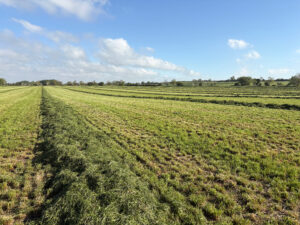We’re continuing our series, “Managing trade effluent in…”, with the construction industry.
When it comes to business water in construction sector, specifically in building and civil engineering, good TE practices are crucial.
Water requirements are everywhere on construction sites; from concrete batching, screeding hydro-demolition, landscaping, soakaway testing and even inside hydraulic systems to power heavy construction machinery. That can create a lot of Trade Effluent.
Trade effluent licence
With such high volume water demands, there is inevitably going to be large by-products and wastewater. This wastewater often needs treated to remove chemicals or organic matter before it is allowed to be pumped back into water courses. This is a legal requirement, meaning you must complete a trade effluent discharge application for a licence to dispose of contaminated wastewater. Depending on the type of development, building sites may be offered a temporary licence.
However, rather than constantly disposal of high effluent volumes, it’s much more environmental and cost effective to find alternative ways to reuse or reduce the consumption of water onsite. Below are some measures that the construction industry implements to help mitigate the production of water pollution.
Water reduction
Naturally, the first and easiest way to reduce effluent is to use less water. Consuming less water means eliminating less wastewater. Start by identifying what construction operations utilise the most water and where alternative measure may be applied. For instance, wet trades, such as brickwork and concreting, can reduce water usage by operating onsite mortar silos rather than individual batch mixing. Alternatively, closed loop water recycling should be implemented when batching onsite. Builders should also install automatic shut-off taps to reduce water wastage.
Environmental obligations
There are many government legislations, such as the Environmental Act 2021, that builders must comply with to maintain sustainability and wider environmental targets. Adhering to both lawful and ethical wastewater disposal is vital for green construction.
Construction sites may take advantage of waterways and reservoirs on their developing land or create temporary settlement lagoons, whereby water is abstracted to use onsite. To comply with environmental policies, these sites must apply for a water abstraction licence before tapping into these water sources. Construction wastewater treatment is also vital in sustaining water courses, protecting biodiversity, and improving climate change.
Minimise surface run-off
A construction site may have sources of runoff that are produced by stormwater. This is when heavy rainfall flows over paved surfaces and does not allow time for the water to soak back into the ground. The water carries pollutants from the contaminated ground surface into the drainage system and waterways.
Help prevent run-off by keeping drains sealed on building sites and sweeping paved areas, especially nearby sand and concrete spreading operations. One main onsite polluter is concrete wash water; to prevent stormwater run-off contamination, builders must collect and dispose using alternative sanitary measures, unless granted permission in their waste disposal licences.
Building sites also have sources of runoff not instigated by stormwater. These can include landscaping/drainage basins, wash water from machinery or equipment, and water utilised in dust control. To minimise the water used in controlling dust, water bowsers with spray attachments are much more efficient: the mist covers a greater surface area and uses less water. Another alternative to using water could be a biodegradable dust solution. When washing equipment or vehicles, stick to a designated, isolated washout area and use buckets rather than hoses. Make sure the area surface is impermeable to stop seepage and check for water leaks. Sites should also develop response plans on how to combat various types of spillages.
Water recycling and repurposing
Recycling water is a means to conserving water, reduce costs and heighten environmental benefits. Many construction sites have switched to more sustainable building programs that encompass water recycling. Water can be collected and reused for other operations onsite. For example, rainwater can be collected and used in water bowsers for dust suppression. The water from washing vehicles and equipment can be recirculated and then recycled into cement mixes. By treating and repurposing wastewater, construction businesses can significantly reduce their water footprint and pollution.
When industries comes together to enhance sustainability, global access to water improves. By finding ways to conserving water allows companies to increase revenue and customer appeal through heightened demand for green services and sustainable products. Learn how to improve water efficiency and your business water services by switching and save today.
Castle Water offers services such as business water services and more. You can reach out to us today.



